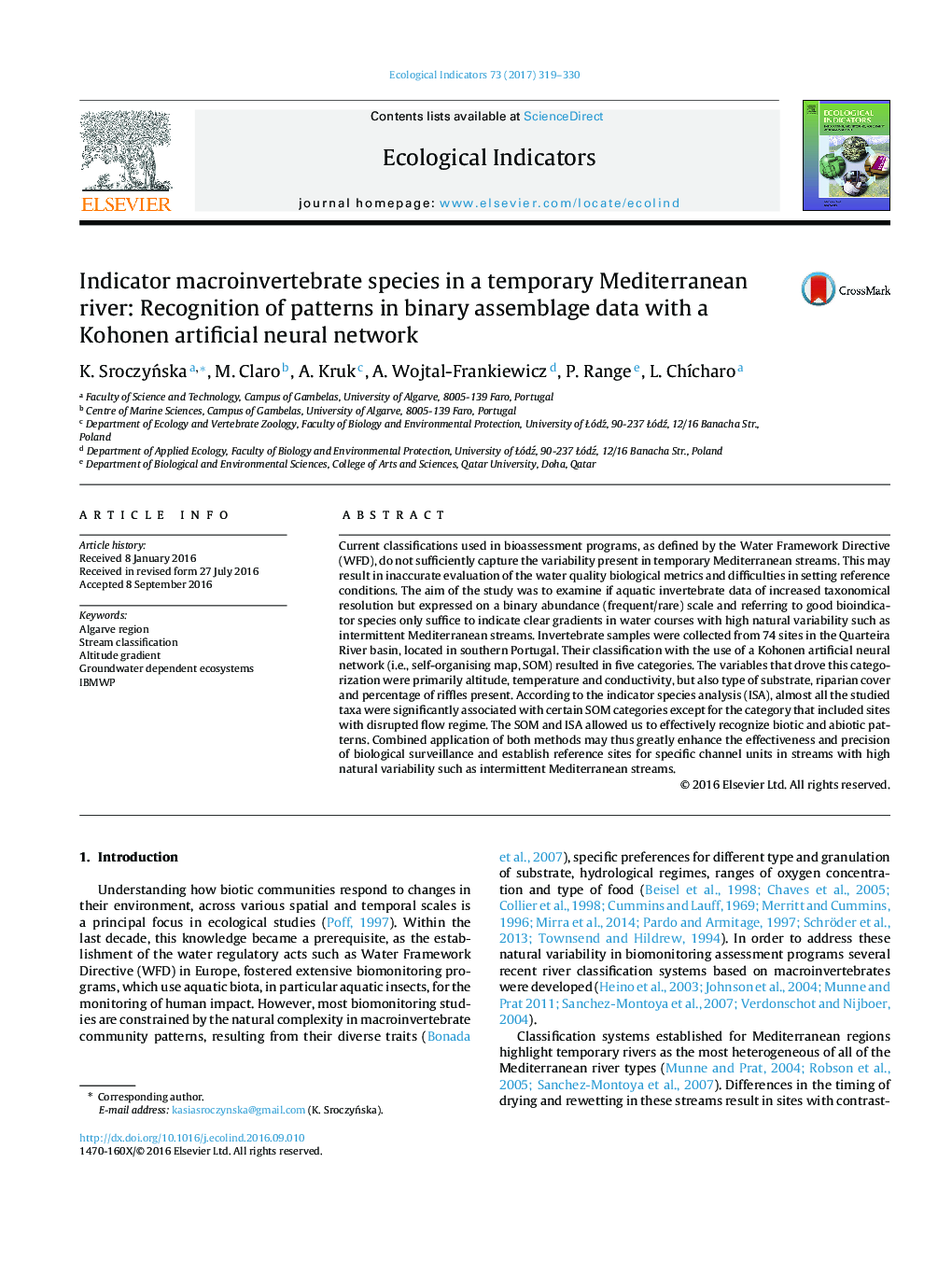| Article ID | Journal | Published Year | Pages | File Type |
|---|---|---|---|---|
| 6292587 | Ecological Indicators | 2017 | 12 Pages |
Abstract
Current classifications used in bioassessment programs, as defined by the Water Framework Directive (WFD), do not sufficiently capture the variability present in temporary Mediterranean streams. This may result in inaccurate evaluation of the water quality biological metrics and difficulties in setting reference conditions. The aim of the study was to examine if aquatic invertebrate data of increased taxonomical resolution but expressed on a binary abundance (frequent/rare) scale and referring to good bioindicator species only suffice to indicate clear gradients in water courses with high natural variability such as intermittent Mediterranean streams. Invertebrate samples were collected from 74 sites in the Quarteira River basin, located in southern Portugal. Their classification with the use of a Kohonen artificial neural network (i.e., self-organising map, SOM) resulted in five categories. The variables that drove this categorization were primarily altitude, temperature and conductivity, but also type of substrate, riparian cover and percentage of riffles present. According to the indicator species analysis (ISA), almost all the studied taxa were significantly associated with certain SOM categories except for the category that included sites with disrupted flow regime. The SOM and ISA allowed us to effectively recognize biotic and abiotic patterns. Combined application of both methods may thus greatly enhance the effectiveness and precision of biological surveillance and establish reference sites for specific channel units in streams with high natural variability such as intermittent Mediterranean streams.
Related Topics
Life Sciences
Agricultural and Biological Sciences
Ecology, Evolution, Behavior and Systematics
Authors
K. SroczyÅska, M. Claro, A. Kruk, A. Wojtal-Frankiewicz, P. Range, L. ChÃcharo,
